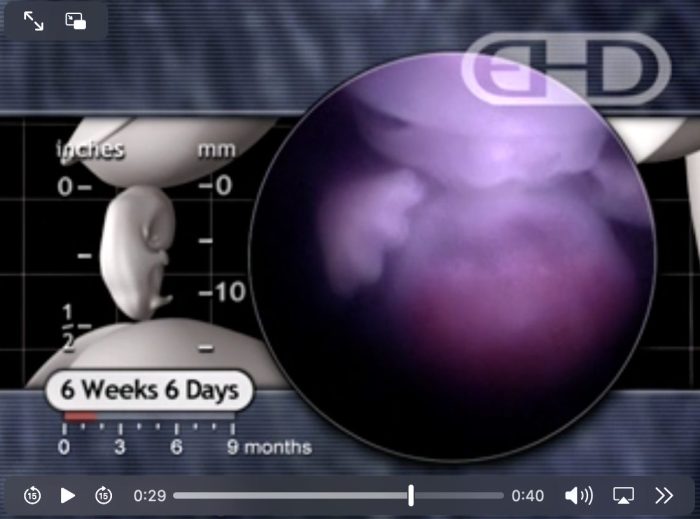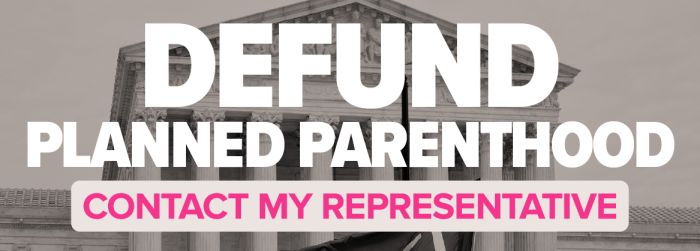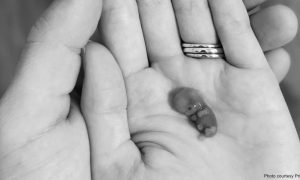UPDATE, 2/7/25: The Arkansas House has passed HB 1180, by a vote of 70 to 18. The bill now advances to the Senate.
2/6/25: Lawmakers in Arkansas have advanced legislation requiring students, beginning in fifth grade, to receive education in prenatal human growth and development. If passed, Arkansas will join Tennessee and North Dakota in giving students accurate information about prenatal human development as part of their curriculum.
What is included in the Arkansas bill?
House Bill 1180 would require that educators must incorporate a prenatal human growth and development discussion into already-existing health and safety classes for students beginning in fifth grade. As part of this curriculum, the bill as introduced requires students to view:
(A) A high-definition ultrasound video that is at least three (3) minutes in duration, which shows the brain, heart, sex organs, and other vital organs in early fetal development; and (B) The “Meet Baby Olivia” video developed by Live Action, which depicts the process of fertilization and every stage of human development inside the uterus and notes significant markers in cell growth and organ development for every significant marker of pregnancy until birth.
The latter of the two videos would appear without branding.
Representative Mary Bentley, who sponsored the bill, said she chose fifth grade as an appropriate introduction time, because it is when students typically begin learning about puberty and human development. “I have shown this video to my four- and five-year-old grandkids who absolutely love it,” she told the Arkansas Advocate. “This is a really fascinating thing. It does not show the procreative act at all. It is simply biology, from the beginning of conception forward so parents can discuss when they want to.”
Parents would have the ability to opt their children out of the discussion if they so choose.
Some have spoken against the bill, including Rep. Denise Garner, who pointed to a statement released last year by the American College of Obstetricians and Gynecologists (ACOG) smearing the “Baby Olivia” video. “The group of medical professionals that deal with these aspects every day who set the standards for women’s care say that this film is medically inaccurate,” she said, according to THV 11. But is ACOG a neutral organization? And is the “Baby Olivia” video inaccurate?
Is “Baby Olivia” scientifically accurate?
“Meet Baby Olivia” utilizes data from the Endowment for Human Development (EHD), a non-profit organization “committed to neutrality regarding all controversial bioethical issues.” Videos of prenatal development from EHD are distributed by National Geographic.
As some states began considering using the “Baby Olivia” video as part of their curricula, pro-abortion groups attacked it. Yet there are no facts in the video that are not based in science. A new, distinct human being begins to exist at the moment when sperm and egg unite — fertilization.
As the Human Embryology & Teratology textbook states:
Although life is a continuous process, fertilization is a critical landmark because, under ordinary circumstances, a new, genetically distinct human organism is thereby formed. … The combination of 23 chromosomes present in each pronucleus results in 46 chromosomes in the zygote. Thus the diploid number is restored and the embryonic genome is formed. The embryo now exists as a genetic unity.
While some have claimed the video contains inaccurate dating, it doesn’t; it simply shows human development from the moment of fertilization onward — a two-week difference from a woman’s last estimated last menstrual period, not on actual embryonic/fetal development. As Mayo Clinic explained (emphases added):
“It might seem strange, but you’re not actually pregnant the first week or two of the time allotted to your pregnancy. Yes, you read that correctly! Conception typically occurs about two weeks after your last period begins. To calculate your estimated due date, your health care provider will count ahead 40 weeks from the start of your last period. This means your period is counted as part of your pregnancy — even though you weren’t pregnant at the time.”
And therefore, it makes perfect sense to date human development from fertilization, as specified in the video. Labeling this as “misleading” is entirely inaccurate.
It has also been alleged that the video inaccurately portrays a human embryo — though EHD‘s embryoscopy and fetoscopy images of preborn human embryos look virtually identical to how “Olivia” is portrayed.

EHD screenshot, 6 weeks and 6 days after fertilization
Embryoscopy from EHD likewise echoes information given in “Baby Olivia,” with a human in the womb shown hiccuping and displaying a “startle” effect.
Though the embryonic heart begins to beat early in pregnancy (about 22 days post-fertilization), ACOG has recently attempted to deny this fact. It’s an interesting swerve, as medical literature has continually acknowledged a heartbeat in the first trimester, even as recently as 2019. The National Library of Medicine likewise states that, at six weeks pregnant (meaning four weeks post-fertilization), the “heart continues to grow and now beats at a regular rhythm. This can be seen by vaginal ultrasound.”
The existence of an early heartbeat only became controversial after “heartbeat bills” were introduced in state legislatures, which attempted to legally protect preborn human beings from abortion upon detectable heartbeat.
An EHD video shows the heart pumping blood through the tiny body:
This is not meaningless electrical activity or random contractions of cardiac muscle. The heart is one of the first organs to develop, specifically because the prenatal human needs blood circulating throughout his or her body in order to grow and develop; without blood, the body cannot receive the oxygen and nutrients it needs.
How did ACOG respond to “Baby Olivia”?
In a previous statement to CNN, ACOG representatives harshly criticized the video, but offered no evidence to back up their claims, instead referring to its creators as “biased… extremists.”
“Like much anti-abortion misinformation, the ‘Baby Olivia’ video is designed to manipulate the emotions of viewers rather than to share evidence-based, scientific information about embryonic and fetal development,” ACOG’s statement asserted. “Many of the claims made in this video are not aligned with scientific fact, but rather reflect the biased and ideologic perspectives of the extremists who created the video. ACOG is strongly opposed to the spread of misinformation about reproductive health.”
While ACOG is the leading professional medical organization for OB/GYNs, it is also staunchly pro-abortion, even willing to contradict itself in attempts to defend abortion. ACOG has conflated induced abortion (intentional killing) and miscarriage care (treating the accidental death of the preborn child) in an attempt to confuse the public and encourage support for legalized abortion. Yet ACOG is well aware that some medical procedures, like a D&C, may be necessary following a natural miscarriage and are not legally considered abortions in any state.
The real issue that many abortion advocates have with “Baby Olivia” is not a purported lack of scientific accuracy; instead, they have admitted that such a video could stigmatize abortion by making the humanity of preborn children crystal clear.
Ultimately, if students understand the humanity of preborn children, abortion advocates fear they will be less likely to support abortion. But pro-abortion ideology is not a justifiable reason to deny students accurate information about prenatal human development.








